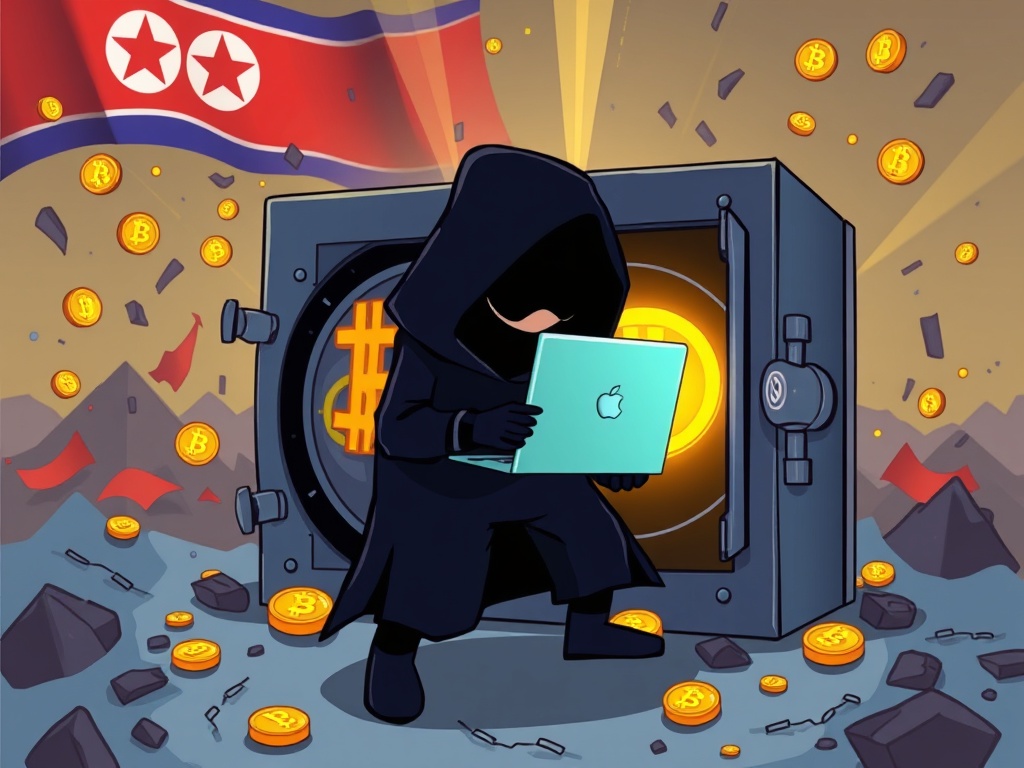BitcoinWorld

North Korean Hackers’ Alarming $19.5M Crypto Theft Shakes Lykke Exchange
The cryptocurrency world often buzzes with innovation, but it also faces persistent threats. A recent development has sent ripples through the industry: North Korean hackers are now officially linked to a substantial $19.5 million crypto theft from the UK-based Lykke exchange. This incident underscores the ongoing challenges in securing digital assets against sophisticated cybercriminals.
What Happened with the Lykke Exchange Theft?
In a significant cybersecurity breach, the notorious North Korean group, Lazarus, has been identified as the perpetrator behind a $19.5 million crypto theft targeting the UK exchange Lykke. The attack occurred in June 2024, leading to the loss of a considerable sum in both Bitcoin (BTC) and Ethereum (ETH). The UK’s Office of Financial Sanctions Implementation (OFSI) confirmed this link, highlighting the persistent threat posed by these state-sponsored actors.
- Targeted Attack: Lykke exchange fell victim to a highly coordinated cyberattack.
- Significant Loss: Approximately $19.5 million in BTC and ETH was stolen.
- Official Confirmation: The UK’s OFSI officially attributed the attack to the Lazarus Group.
This incident unfortunately had severe consequences for Lykke. The exchange faced liquidation in March, a direct aftermath of the devastating cyberattack, as reported by The Daily Hodl. It serves as a stark reminder of how a single security breach can unravel an entire operation.
How Do North Korean Hackers Launder Stolen Crypto?
Following the theft, the stolen Bitcoin and Ethereum embarked on a complex journey through various laundering channels. Understanding these methods is crucial for authorities trying to track and recover funds. The Lazarus Group, like other sophisticated cybercriminals, employs a multi-layered approach to obscure the origins of their illicit gains.
Key laundering methods identified in this case include:
- Thorchain: A decentralized cross-chain liquidity protocol that allows swapping assets without a central intermediary, making transactions harder to trace.
- No-KYC Exchanges: Platforms that do not require users to undergo ‘Know Your Customer’ verification, providing anonymity to the criminals.
- OTC Desks: Over-the-counter desks in regions like China, Cambodia, and Russia facilitate large, private transactions, often bypassing traditional regulatory scrutiny.
These methods allow North Korean hackers to convert stolen digital assets into fiat currency or other untraceable assets, funding their illicit activities, including weapons programs.
Protecting Your Assets from Cyber Threats
The Lykke incident involving North Korean hackers serves as a critical warning for both cryptocurrency exchanges and individual users. While exchanges must invest heavily in robust security infrastructure, users also play a vital role in safeguarding their digital wealth. Implementing strong security practices is no longer optional; it is essential.
For exchanges, this means:
- Multi-layered Security: Implementing advanced encryption, multi-factor authentication, and cold storage solutions.
- Regular Audits: Conducting frequent security audits and penetration testing to identify vulnerabilities.
- Incident Response Plans: Having clear, actionable plans for responding to and mitigating cyberattacks.
For individual crypto holders, consider these actionable insights:
- Use Hardware Wallets: Store significant amounts of crypto offline in hardware wallets.
- Enable 2FA: Always use two-factor authentication on all exchange accounts.
- Be Skeptical: Be wary of phishing attempts and suspicious links.
- Strong Passwords: Use unique, complex passwords for each platform.
The persistent threat from groups like the Lazarus Group highlights the need for continuous vigilance and adaptation in the face of evolving cybercrime tactics. The crypto community must unite to enhance security protocols and share intelligence to counter these sophisticated threats effectively. This collective effort is crucial for the long-term integrity and trust in the digital asset space.
FAQs
Q1: Who are the Lazarus Group?
A1: The Lazarus Group is a state-sponsored cybercrime organization believed to be operated by North Korea. They are notorious for high-profile cyberattacks, particularly targeting financial institutions and cryptocurrency exchanges globally.
Q2: How much was stolen from Lykke exchange?
A2: Approximately $19.5 million in cryptocurrency, specifically Bitcoin (BTC) and Ethereum (ETH), was stolen from the Lykke exchange.
Q3: What happened to Lykke exchange after the attack?
A3: Lykke exchange was unfortunately liquidated in March, following the devastating impact of the June 2024 cyberattack attributed to North Korean hackers.
Q4: How do hackers like Lazarus Group launder stolen crypto?
A4: They use various methods including decentralized exchanges like Thorchain, no-KYC (Know Your Customer) exchanges to maintain anonymity, and over-the-counter (OTC) desks in countries like China, Cambodia, and Russia to convert crypto into fiat currency.
Q5: What can users do to protect their crypto from such attacks?
A5: Users should use hardware wallets for cold storage, enable two-factor authentication (2FA), use strong, unique passwords, and be highly vigilant against phishing attempts and suspicious links.
If you found this article insightful, please consider sharing it with your network on social media. Spreading awareness about these threats helps protect our community.
To learn more about the latest crypto market trends, explore our article on key developments shaping Bitcoin price action.
This post North Korean Hackers’ Alarming $19.5M Crypto Theft Shakes Lykke Exchange first appeared on BitcoinWorld and is written by Editorial Team





